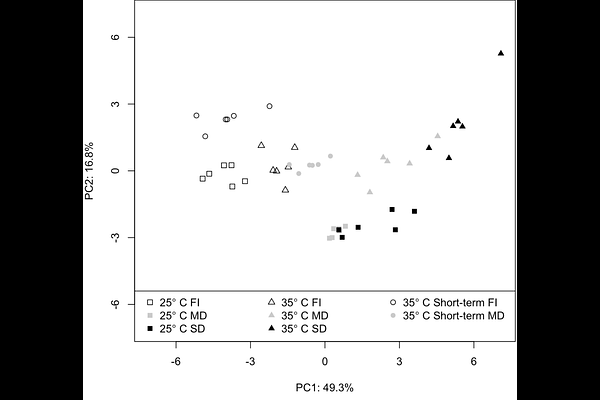Exposure time to moderately high temperature affects photosynthetic response to water deficit in Eucalyptus globulus Labill.

Exposure time to moderately high temperature affects photosynthetic response to water deficit in Eucalyptus globulus Labill.
Portes, M. T.; Santa Cruz Damineli, D.; Chaves, M. M.; Souza, G.
AbstractThe co-occurrence of drought and heat stress in the field is especially frequent and the plant response to a combination of these abiotic stresses is singular, remaining largely unknown. Understanding physiological responses to a combined stress is of particular importance in face of the imminent global climate changes, which is predicted to entail not only higher temperatures, but also increase in drought, imposing restrictions to the productivity of economically important species as Eucalyptus globulus. This forest species is critically affected by changes in temperature and water availability, since its high productivity implies in high rates of water use. In order to evaluate the photosynthetic responses of E. globulus to these environmental conditions, young plants were grown at 25o C and 35o C under different irrigation regimes: full irrigation (FI), moderate drought (MD), and severe drought (SD). Plants grown at 25o C FI and MD were also subjected to a short-term exposure to 35o C. Several ecophysiological variables, derived mainly from leaf gas exchange and chlorophyll a fluorescence measurements, were compared in order to test the hypotheses that: i) E. globulus show different responses to short or long-term exposure to 35o C; ii) the effect of both stresses combined will not be simply the sum of each condition applied separately. Our results showed that plants respond differently to water deficit according to the thermal regime. The combination of water deficit and a long-term exposure to 35o C caused a down-acclimation of the photosynthetic capacity, while plants under the short-term treatment showed a higher performance, even when compared to the 25o C control condition, supporting the hypothesis i. Thus, the short-term exposure to 35o C induced an increase in tolerance to water deficit. Since the response to a combination of heat and drought differed from the superposition of individual responses, as observed mainly at 35o C, the hypothesis ii was also supported by our results.